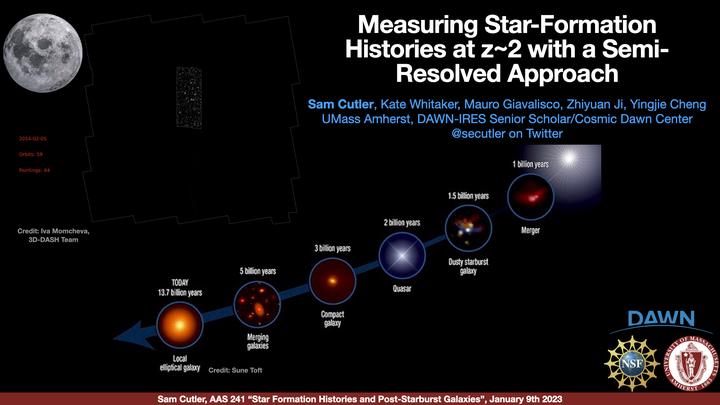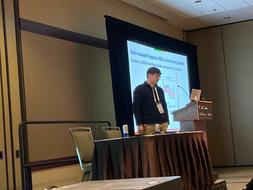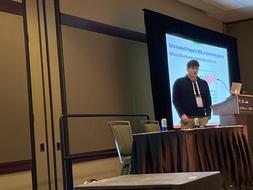
Abstract
Understanding the history of star formation in galaxies is key to gaining a more comprehensive picture of galaxy formation, evolution, and quenching. However, a significant amount of photometric and/or spectroscopic data is necessary to robustly model the non-parametric star-formation histories (SFHs) of galaxies. Semi-resolved SFHs also require the photometry and spectroscopy to be spatially resolved, which limits the use of longer-wavelength data. We present a study of the semi-resolved, 2-component SFHs of 60 z~2 main-sequence, star-forming galaxies in the GOODS-N field, modeled using the Prospector code with a novel iterative method to incorporate unresolved K-band/IRAC data. Our results suggest that selecting star-forming galaxies at cosmic noon may frequently include systems in an “evolved” evolutionary phase where the centers have recently started a burst of star-formation activity that will likely initiate inside-out quenching in the next several hundred million years. Due to the extensive data sets required to model resolved SFHs, we also develop a model to match observed F814W-F160W color gradients from 3D-DASH and COSMOS/ACS imaging to quenching and formation timescales of quenched galaxies at z~2. These timescales provide an overview of the galaxies’ formation time (early or late) and quenching speed (fast or slow), suggesting that the overall evolutionary history of these quenched galaxies at this epoch can be inferred using semi-revolved color gradients.

